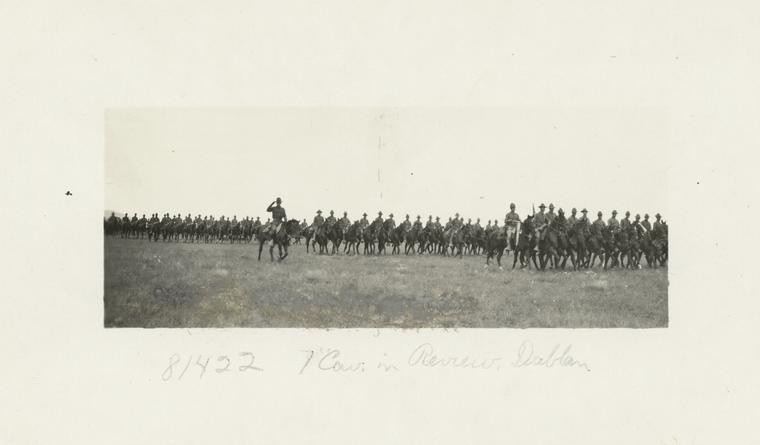
The operations and posts of the United States military are an important part of the history of
![View Smaller Image Major Ringold [ie. Ringgold] directing operations of battery, at Palo Alto, May 8, 184[6].](http://images.nypl.org/index.php?id=831379&t=w)
the Santa Cruz Valley. The first United States Army post was established here in 1856, soon
after the region was purchased from Mexico.

Mexicans have always fascinated the British and Euro soldier producer, thje best figures were Reisler and his output put to shame the rest of the field, this was Reislers masterpiece. Britains deetail ones were well done but badly painted.

The Steve Weston ones are not really worth buying if you can get Reisler, they are far too histrionic.I would avoid them as they also lack soul and you know that when thats the case you can barely look at them. Soul in fact is what draws us to

particular soldiers , the ones you always kinda liked because they expressed some quality, the Reisler expressed the same

sense of menace as Wallach produced in the magnificent Seven.

But what of the war along the Mexican border with america?
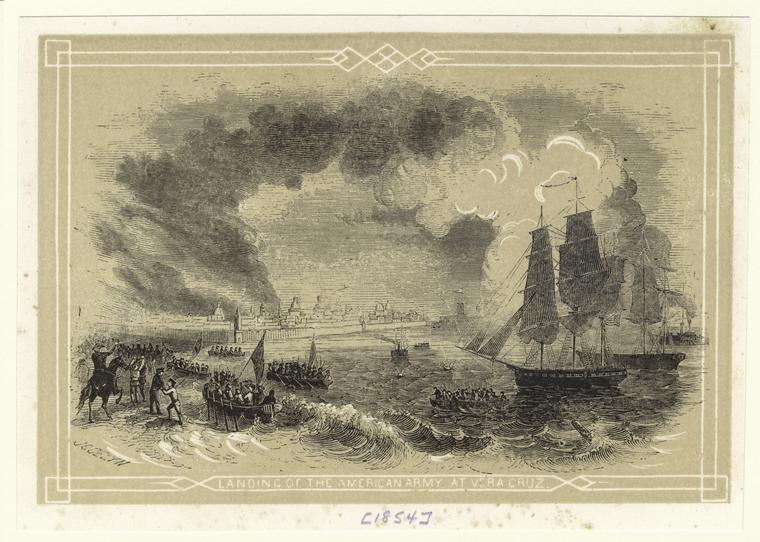
The first duty was to protect mines and ranches
from Apache attacks, which escalated just before troops were withdrawn at the beginning of
4S8hSBOpWupf5Ug~~60_12.JPG)
the Civil War to be redeployed in the East. For a few months in 1862, the Confederate flag

flew over the region, until Union troops arrived from California and recaptured it following

the westernmost skirmishes of the Civil War. In 1865, United States troops were moved closer
to the border to defend it against French troops that had invaded Mexico and occupied Sonora.
Between 1866 and 1886, several new posts were established, and this region was the frontline
of major campaigns to pacify the Apaches.

A new post was established in Nogales in 1910, when the Mexican Revolution threatened to
spill across the border. In 1916, this region was a staging area for the Punitive Expedition led

by General John J. Pershing; it crossed into Mexico in pursuit of Pancho Villa after he attacked
a town in southern New Mexico.
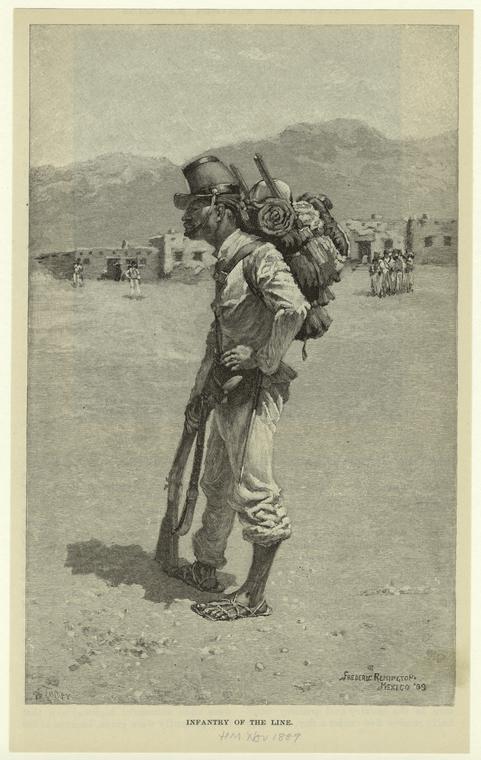
Until the beginning of United States involvement in World
War I, the military presence was swelled by National Guard units mobilized from western


states to protect the border. From 1918 until 1933, the border was guarded by African-American
cavalry and infantry regiments known as Buffalo Soldiers.

During World War II, airfields established in the region were important training bases. Due
to the dry climate of the area, thousands of decommissioned aircraft have been stored here
![View Smaller Image [Group portrait with Maclovio Herrera, cavalry leader.]](http://images.nypl.org/index.php?id=831159&t=w)
since the end of World War II. Bomber groups and intercontinental missiles deployed here

were critical parts of the national defense during the decades of the Cold War.

Today, DavisMonthan Air Force Base continues to serve important roles for the United States military and
the local economy.

Securing New American Territory

The first expedition of the United States Army into the region was by the Mormon Battalion
in 1846, passing through on its way to help seize California during the Mexican War.

The
Santa Cruz Valley was included in 30,000 mi

2
of northern Sonora that became part of the
United States after the Gadsden Purchase was approved by Congress in 1854. American troops

did not immediately take control of the new territory, which is now southern Arizona and
southwestern New Mexico

. It was two years later, when four companies of the 1st Dragoons
cavalry regiment arrived from New Mexico to replace the small Mexican garrison that had

remained at the Tucson Presidio to protect the residents.

The commander of the United States force, Major Enoch Steen(Steens pillar below), did not approve of the housing,

water, pasture, or people in Tucson. Disobeying his orders to establish a post there, he led his

men 60 miles south and set up Camp Moore

near the recently reoccupied ranch at Calabazas.
The hacienda there was built in the ruins of a Spanish period mission visita at the confluence 4

of Sonoita Creek

and the Santa Cruz River,

long abandoned due to Apache raids. Renovated

ranch buildings served as quarters for Major Steen and his family.

With the arrival of military protection, the ranch, leased to the post by the ex-Governor of

Sonora, quickly swelled with American squatters. Ignacio Pesqueira,
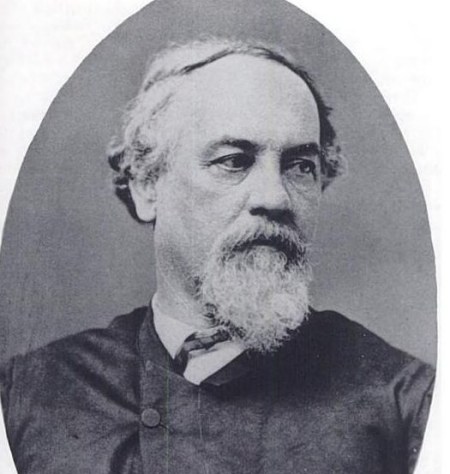
the new governor,
allowed quartermaster wagons to cross into Sonora for supplies. The following year, Steen

received orders from Colonel Benjamin Bonneville,

the departmental commander in Santa
Fe, to move closer to Tucson. Deriding Tucson as inhabited largely by peddlers of whiskey

and flesh, Steen instead moved his camp 25 miles northeast to the headwaters of Sonoita
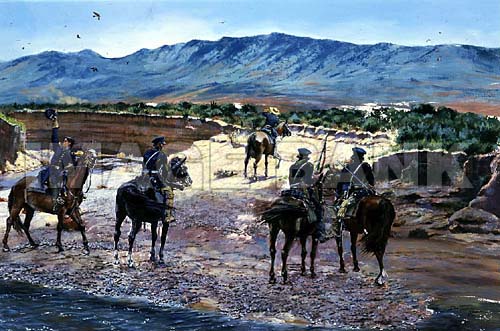
Creek. The new post was named Fort Buchanan in honor of the recently inaugurated President
James Buchanan.

In May and June of 1857, a major campaign was conducted against the Apaches under the

orders of Colonel Bonneville.
![View Smaller Image [United States soldiers shaking hands, 1850s.]](http://images.nypl.org/index.php?id=831409&t=w)
A large detachment from Fort Buchanan was led by Captain

Richard S. Ewell, as Major Steen was ill with malaria. Joined by troops from forts in New

Mexico, the force searched the rugged mountains along the present Arizona-New Mexico lineupper Gila River.
until it found and attacked an Apache camp on the upper Gila River.

Unhappy Outpost
Both health and morale were chronically low at Fort Buchanan, one of the most remote posts
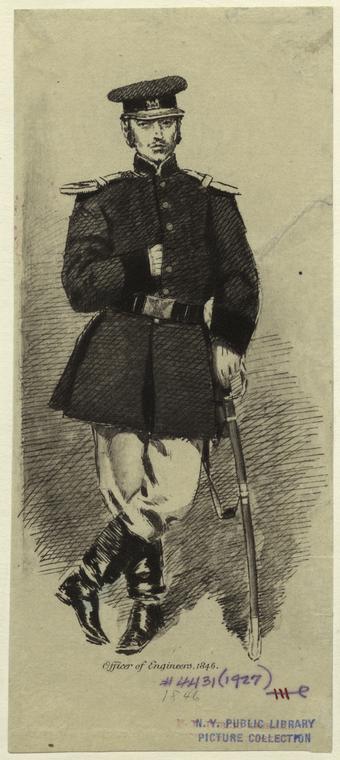
in the country. Malarial mosquitos bred in nearby marshy cienegas, making it an unhealthy

place to live. In 1858, the post doctor reported that only two occupants of the fort remained
free of malaria. Housing for the soldiers was also inadequate, consisting of crude huts
constructed of upright logs, with the gaps chinked with mud and roofs of mud. Scattered

over a half-mile area, the huts were not protected by a surrounding palisade, and Apaches
often prowled through the post at night.

In 1858, two of the four companies of 1st Dragoons at Fort Buchanan left for California,

and
the following year, another company was relieved by a company of the 8th Infantry.


A
detachment of the Mounted Rifles also arrived from New Mexico.

The new garrison was
poorly equipped. For the 93 soldiers, there were only 56 horses, many of them worn-out steeds

left over from the Mexican War. Mules were also used during field operations, and proved to
be better suited to the long treks and rough terrain.
Model 1847 Dragoon Musketoon (smooth bore .69 calibre)
The soldiers were issued variations of
eight different types of firearms, but most of the ammunition was of one kind, so many weapons
were useless. Despite these obstacles, under the command of Lieutenant Colonel Isaac V. D.
Reeve of the 8th Infantry, the troops of Fort Buchanan conducted several campaigns in reprisal

of Apache raids in the region, with the largest campaign being conducted in November 1860.
Escalation of Conflicts with Apaches
Colt 2d Model Dragoon Pisto
When a company of the 1st Dragoons returned in 1860, the 8th Infantry left to establish Fort
Breckinridge on the nearby San Pedro River. The Dragoons at Fort Buchanan were soon relieved
Colt 1851 .36 Caliber Navy Revolver
by the 7th Infantry, commanded by Lieutenant Colonel Pitcairn Morrison,

for which the post
became regimental headquarters. Shortly after this, Fort Buchanan became the focus of a famous

incident that escalated hostilities between Apaches and Americans.

In January 1861, a group of Apaches attacked Johnny Ward’s ranch on Sonoita Creek,

stealing
cattle and abducting Ward’s stepson, Féliz Martínez. Under the impression that Chiricahu

Apaches were responsible, Ward traveled upstream to Fort Buchanan and asked the
commander to send troops east to Apache Pass to retrieve the boy and the cattle. Morrison

sent a company under the command of Second Lieutenant George Bascom,

fresh from West
Point. Under a flag of truce, Bascom met with Cochise, leader of a band of Chiricahuas camped

nearby. Cochise told Bascom that a band of Coyoteros (White Mountain Apaches) had

committed the raid. As insurance for the boy’s return, however, Bascom seized and took

prisoner Cochise and the six others in his group, which included three relatives. Witnesses

report that an infuriated Cochise jumped up, slashed an opening in the tent wall with a knife,
and escaped in a hail of gunfire. The six others were still hostages. Cochise stayed near and

kept close watch on the military camp, and he was quickly joined by other Chiricahua Apaches
and some warriors of the White Mountain band.

Over the next two months, a series of negotiations for hostage exchanges, more betrayals by

Bascom, and violent reprisals on both sides resulted in the execution of Cochise’s companions,

the killing of 150 Americans, the destruction of five Butterfield Stage stations,

and ambushes
of a wagon train and a stagecoach. In February, more troops from Fort Buchanan and Fort
Breckenridge reached Apache Pass and the Indians scattered.

The kidnapped boy, Féliz,
remained with the Indians and later became the noted United States scout Mickey Free, but

the Bascom Affair had started a long war between the United States and the Apaches.
At the beginning of the Civil War later in 1861, United States troops in the Santa Cruz Valley

and every other post in Arizona were ordered east. Fort Buchanan was burned to prevent it
from being used by Confederate soldiers. Camp Lowell,

established the previous year in what
is now downtown Tucson, was abandoned.

Thinking they had defeated the Americans, the

Apaches scavenged for usable items at the abandoned forts and increased their raiding in the

region. Almost every mine, ranch, and town had to be abandoned. The only holdouts against
the Apaches were the town of Tucson; Sylvester Mowry’s silver mine,
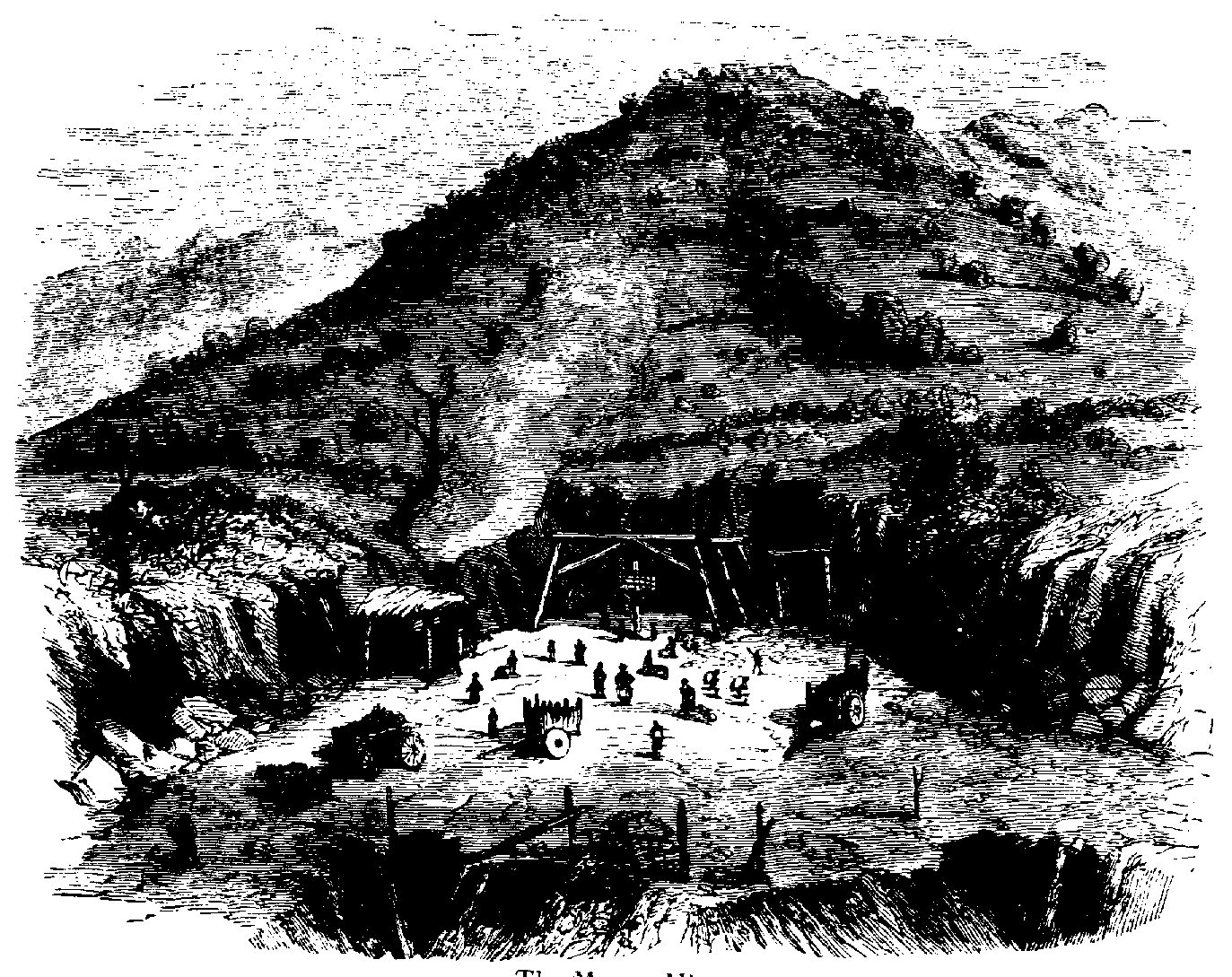
swelled with miners
from other claims seeking protection; and Pete Kitchen’s ranch on Potrero Creek,

just north of

the United States-Mexico border. Kitchen described the stops on the dangerous road to Sonora
as “Tucson, Tubac, Tumacácori, and to Hell.”

The Civil War on the Border
The Confederate Territory of Arizona, including most of what is now southern Arizona and
southern New Mexico, was designated in 1861 by Lieutenant Colonel John R. Baylor of the
2nd Texas Mounted Rifles.

The Confederate government in Richmond, Virginia, quickly
recognized the territory, defined as all of the Territory of New Mexico that lay south of the
34th parallel. General Henry H. Sibley,

commander of the Confederate Army of New Mexico,
ordered Captain Sherod Hunter from Baylor’s regiment to Tucson to establish headquarters
there.
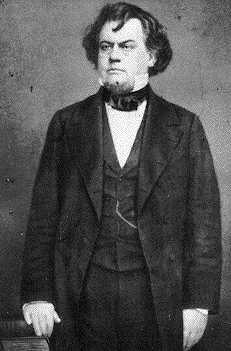
Hunter arrived in Tucson with less than 70 men in February 1862, and raised the Confederate
flag. Numerous southern sympathizers were among the Anglo residents. Many were from
southern states, but there was also widespread anger against the United States for withdrawing
all military protection from the Apaches. The few remaining Union sympathizers were rounded
up, and those who did not swear an oath of allegiance to the Confederacy were forced to
leave town and forfeit their properties. Gaining some recruits in Tucson, Hunter’s Arizona
Rangers

were able to secure 3,000 percussion caps from Sylvester Mowry’s mine, and additional
supplies were obtained in Sonora.Hunter traveled north to Ammi M. White’s flour mill and surrounding Pima villages on the

Gila River, where he captured an advance party of the approaching 1st California Cavalry. To
slow the advance of the main force of 2,300 California Volunteers from Fort Yuma,
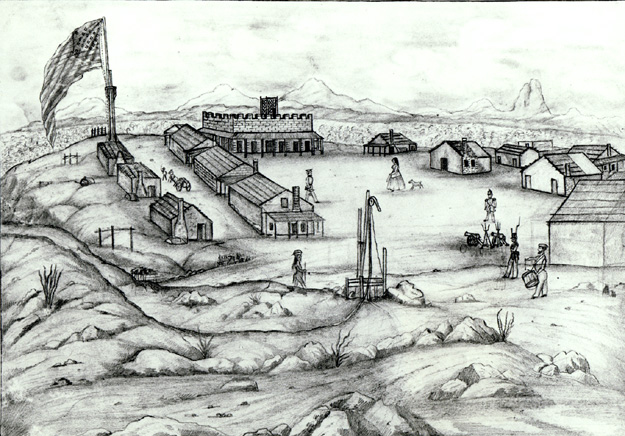
Hunter
sent detachments to burn the hay stockpiled at former Butterfield Overland Stage stations
between Yuma and Tucson. Perhaps reaching the banks of the Colorado River, this was the
farthest western penetration of the Confederate Army, and this action delayed the Union
invasion of Arizona by more than a month.

A skirmish was fought on 3 March 1862 between
Hunter’s men and a detachment from Fort Yuma at Stanwix Station,

an abandoned Butterfield

station on the Gila River.

This incident was the westernmost skirmish of the Civil War.

Afterward, Hunter sent a detachment of 10 men to Picacho Pass between Tucson and Phoenix
to watch for the approaching California Column.

The second skirmish between United States and Confederate troops in what is now Arizona

was fought at Picacho Pass on 15 April 1862, between a small number of Union troops and the
10 Confederate pickets. Several of the Confederates were killed or taken prisoner, and three
Union soldiers were killed. Swayed by exaggerated reports of the size of the Confederate
force in Tucson, the Union force withdrew to the Gila River. Receiving accurate reports of the
large size of the approaching Union force, Captain Hunter ordered the evacuation of Tucson
on 14 May, leaving only a small detachment behind to notify him of the arrival of Union
troops. The Civil War in Arizona was over.

On 20 May 1862, Lieutenant Colonel Joseph R. West led four companies of infantry and cavalry
of the California Volunteers into Tucson, and the remaining Confederate detachment fled.
General James H. Carleton,

overall commander of the California column, soon arrived with
more troops. Carleton announced the creation of the Territory of Arizona, named himself
Governor, and declared martial law.
Camp Lowell was reoccupied on the future site of the Santa Rita Hotel in downtown Tucson.

The house of Confederate sympathizer Palatine Robinson was confiscated and used as
headquarters. Under Major David Fergusson, military surveyors mapped the town and its

agricultural fields along the Santa Cruz River so they could identify the properties of
Confederate sympathizers for confiscation. Two companies of cavalry were sent south to
Sylvester Mowry’s silver mine,

where they arrested Mowry and Palatine Robinson, who was
visiting.
The Union soldiers established the Tucson Supply Depot, using confiscated buildings at the
Plaza de las Armas,

within the crumbling walls of the old presidio, and at the Plaza de la
Mesilla to the south. Tucson became the major supply depot for posts between Fort Yuma and
New Mexico garrisoned by the California Volunteers. In July and August of 1862, a temporary
post was occupied at El Reventon, a ranch on the Santa Cruz River 35 miles south of Tucson.
In 1864, El Reventon was reoccupied and one company of the 1st California Cavalry was
stationed at the abandoned Calabazas Ranch.

Gold and silver strikes to the north and west during the early 1860s increased Washington’s
interest, and Arizona was declared a separate United States territory. A north-south line was
chosen to separate Arizona and New Mexico because it broke up the pro-southern area that
spanned the southern parts of both territories.
When the Civil War ended in 1864, the Tucson Supply Depot was moved north to Fort Whipple,

the new military headquarters in Arizona. That same year, units of the 1st California Cavalrywere stationed at Tubac to provide protection from Apache attacks. The following year, the
cavalrymen at Tubac were relieved by companies of the 7th California Infantry.
Defending the Border

In 1865, French forces supporting Napoleon III’s puppet, the Emperor Maximilian, occupied
Sonora as far north as Magdalena

. Rumors spread that they might try to reclaim the Gadsden
Purchase.

General John S. Mason, the new commander of the District of Arizona, was ordered
to transfer the Tubac garrison to Calabazas, 8 miles from the border. Leaving only a detachment
at Tubac,

companies of the 7th California Infantry were repositioned to build and garrison
the new post, dubbed Fort Mason, located on the site of old Camp Moore. There, they were
reinforced by a battalion of the Native California Cavalry. Ignacio Pesqueria, the new Governor
of Sonora, fled the French troops and took refuge at Calabazas with his own troops

. With
arms and ammunition provided by the American commander, the governor took his troops
back across the border, defeated the French troops, and regained control of Sonora.

When an epidemic affected one-third of the United States troops at Fort Mason and its Tubac
outpost in the fall and winter of 1865, vacant houses at Tubac were used to quarantine the
sick. Early in 1866, the California Volunteers headed west to be mustered out, leaving behind
units of the 1st Cavalry and the 14th Infantry. In compliance of 1866 General Orders to rename
unfortified forts in Arizona as camps, the commander changed the designation of Fort Mason
to Camp McKee.

When another epidemic struck in the fall of that year—about the same time
the French forces began withdrawing—the post was abandoned and the garrison was
moved to Camp Cameron, 15 miles northeast of Tubac, in the foothills of the Santa Rita
Mountains.

Scouting, Escort, and Pursuit Duty
In 1866, a company of the 1st Cavalry arrived in Tucson and cleared trees for a new post in a
location east of town, but which is now in the heart of the city. The new post was named Fort

Lowell in honor of a Union officer killed during a Civil War battle in Virginia. Later that year,
the designation changed from fort to camp in compliance with General Orders. Camp Lowell,
occupied by companies of the 1st Cavalry and 32nd Infantry, was primarily a tent encampment,
with ramadas built over the tents for shade, and a guardhouse, magazine, and ordnance

storeroom built of adobe. Officers with families rented quarters in town, and Apache scouts
lived in a settlement half a mile to the south. Papago scouts were stationed at Calabazas.

In 1867, a temporary convalescent camp was set up in the Cañada del Oro north of Tucson by
troops from Camp Grant who were recovering from malaria. Apache raids were increasing in
southern Arizona, and ranchers and residents of smaller towns asked for protection. Between
May 1867, and March 1868, troops of the 1st Cavalry re-occupied the post at Tubac, using
abandoned buildings, and guarded the Santa Rita mines.
By the time Fort Buchanan was abandoned at the beginning of the Civil War, work had already
begun on moving the post about a half mile northeast. When troops of the 1st Cavalry moved
from Camp Tubac to the selected location in 1868, they found enough neatly stacked adobe
bricks, left in 1861, to construct the necessary buildings. The new post above Sonoita Creek
was named Camp Crittenden after a colonel of the 32nd Infantry, then commanding the District
of Tucson. The garrison actively scouted and pursued Apaches raiding ranches in the region,
seeing much action during 1870 and 1871.

In 1870, Camp Lowell was expanded by claiming 367 acres to the east and south, in the area
known today as Armory Park. A new guardhouse, adjutant’s office, and an arsenal were
constructed of adobe, but the soldiers continued living in tents. Between 1866 and 1873, various
companies of 1st, 3rd, 5th, and 8th Cavalry, and of the 14th, 21st, 23rd, 32nd Infantry regiments
were rotated through the post.
Incited by a series of editorials in the Arizona Miner newspaper, in April 1871, a party of
approximately 150 Anglos, Mexican-Americans, and Tohono O’odham from Tucson ambushed
a camp of Aravaipa and Pinal Apaches on Aravaipa Creek

, where they were under the nominal
protection of nearby Camp Grant. Most of the men were away from the camp, so the more
than 100 Apaches killed were mostly women. Twenty-seven children were also captured, and
the settlement was burned. Dubbed the Camp Grant Massacre by the eastern United States
press, the perpetrators were put on trial by order of President Ulysses Grant. A jury of southern
Arizona residents, who considered the attack justifiable revenge for every Apache depredation
of the previous decades, acquitted all the defendants.

Subjugating the Apaches
The incident near Camp Grant convinced the President and military leaders in Washington
that the conflict between Americans and Indians in the Southwest had to be resolved. Under
orders to end the last Indian resistance in the region, General George Crook was assigned
command of the Department of Arizona in June 1871. In the fall of 1872, he began a campaign
to defeat the last groups of Yavapais and Western Apaches who resisted relocation to
reservations.

Needing troops for this campaign, Crook ordered the abandonment of Camp Crittenden, but
sent a troop of the 5th Cavalry to protect local farmers until after the harvest. This detachment
left at the end of the year to participate in the campaign, leaving behind only a small garrison
to remove government property. Crittenden was finally abandoned in June 1873. That same
year, a military telegraph system connecting San Diego with Yuma, Tucson, and Prescott was
completed, and was used during the campaign. Ultimately, Cochise’s band of Chiricahua
Apaches agreed to settle on a reservation in southeastern Arizona. With the considerable help
of Apache scouts from other bands, the Yavapai and Western Apache were defeated, and the
few survivors were forced onto reservations. The last holdouts surrendered by 1875.
As the edge of the growing town of Tucson reached Camp Lowell, officers became concerned
about increasing illnesses among the troops and misbehavior of soldiers in town. In 1873, the
post was moved 7 miles northeast of Tucson to the bank of the Rillito,
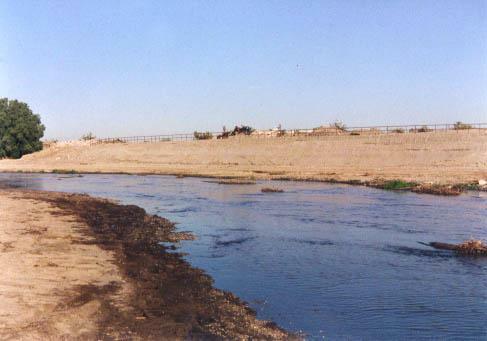
where there was also
better grazing, water, and wood. The new post retained the name of Camp Lowell, and troops
of the 5th Cavalry replaced those of the 1st Cavalry and 23rd Infantry. The garrison occasionally
responded to Apache attacks on ranches and logging camps, but mostly performed escort
duty. The designation was changed to Fort Lowell in 1879, when all camps in Arizona were
changed to forts in compliance with a new set of General Orders.

Front of the Last Apache Campaigns
Crook returned to Arizona in September 1882 to track down the last bands of Chiricahua
Apaches who refused reservation life. After Mexico signed a treaty allowing United States
troops to chase hostile Apaches into northern Mexico, Crook led about 50 soldiers and 20

Quechan, Mohave, and Western Apache scouts into Sonora to chase a Chiricahua band led by
the shaman called Geronimo by Mexicans. Chased into the Sierra Madre, Geronimo’s band
agreed to return to the reservation at San Carlos, arriving in February 1884.

However, tired of
the hardships and humiliations of reservation life, some of the Chiricahuas deserted the
reservation later that year, fleeing to Sonora. Crook led another expedition after them.
An agreement brokered by Crook and Geronimo for the Chiricahuas to return to the reservation
following a two-year imprisonment in the East was rejected by President Grover Cleveland

and General Philip Sheridan, and some of the Apaches escaped again. A furious Sheridan
ordered Crook to stop using Apache scouts and to ship the remaining

Chiricahuas by railroad
to permanent exile in Florida. Crook asked to be relieved of command, and he was succeeded
by General Nelson Miles.

Miles led 5,000 troops—a fifth of the United States Army—after Geronimo’s band. He ordered
the establishment of a heliograph network that connected United States military posts in the
region. Using mirrors, the heliograph directed beams of sunlight up to 40 miles in any direction,
and shutters interrupting the beam allowed messages to be sent using the dots and dashes of
Morse code.

The impressive United States force, backed by this advanced military communication system,
never engaged the renegade Apaches. Geronimo was tracked down by Chiricahua scouts and
agreed to surrender for the fourth and last time. After the ceremony was held in Skeleton
Canyon in southeastern Arizona on 4 September 1886, Geronimo, his companions, and even
the loyal Apache scouts were shipped to exile and imprisonment in Florida, where many died
of unfamiliar diseases. The Chiricahua Apaches were not allowed to return to the Southwest
until 1913, when the few survivors were given a part of the Mescalero Apache reservation in
central New Mexico.

Troops from Fort Lowell participated in the Apache campaigns of the 1880s, and the post
served as the major supply depot to posts closer to the field of operations. During this time,
the fort quartered companies of the 4th Cavalry and the 8th Infantry. With the final surrender
of Geronimo in 1886, troops were gradually withdrawn from southern Arizona. In the late
1880s, Fort Lowell gained a reputation as a prestigious place to be stationed, and it was
designated the regimental headquarters of the 6th Cavalry. The fort was abandoned in 1891,
when troops were needed for General Miles’ campaign against the Sioux in South Dakota.
Protecting the Border during the Mexican Revolution

In the fall of 1910, Mexican supporters of Francisco I. Madero revolted against the 30-year
dictatorship of President Porfirio Diaz. Mexico became embroiled in a violent revolution,

with opposing political and military forces struggling for control of the country. Wary of the
violence spilling across the border, United States troops were stationed at Nogales, Naco, and
Douglas in 1910, joining the previously established Fort Huachuca in a line of defense.

After the assassination of President Madero

in February 1913, Sonorans refused to accept
Victoriano Huerta as his successor. Huerta was the former Diaz general who had betrayed

Madero. Sonora and the twin border towns of Nogales became a focus of the revolution. On
13 March 1913, rebels led by the Sonoran strongman, General Álvaro Obregón, attacked

Nogales, Sonora, which was guarded by Huerta’s troops under Colonel Bernardo Reyes an

rurales (rural police) under Colonel Emilio Kosterlitzky. Sightseers came from all over Arizona

to witness the Battle of Nogales, picnicking while they watched. Outmatched, Kosterlitzky

and his men fled across the border into Arizona and turned over their arms to the 5th United

States Cavalry.

Following his success in Nogales, Obregón won another battle a few days
later in nearby Cananea.

In April 1914, the coastal city of Vera Cruz was seized by the United States Navy to protect
important American-owned oil fields, and President Huerta was forced to resign and flee.
Obregón called General Francisco “Pancho” Villa, the cattle rustler turned revolutionary leader
of Chihuahua, to a meeting in northern Mexico to determine who would take over as president.
Consensus could not be reached. Wary of Villa’s power, Obregón decided to throw his support
to Venustiano Carranza, the governor of Coahuila in northeastern Mexico. In another attempt
to broker a peaceful solution between the warring factions, General John J. “Blackjack”
Pershing, a veteran of Miles’ Apache campaign, hosted a meeting in Nogales, Arizona, on 28
August 1914. On Pershing’s staff was a young officer named Dwight D. Eisenhower. Villa
arrived with 50 bodyguards, and Obregón arrived by train along with Sonora’s Governor
José María Maytorena and Carranza. This meeting was also inconclusive.
Mexico elected a new Constitutionalist government, with Carranza as president, in 1915. After
receiving the support of Obregón, Carranza’s major opponent was Villa. On 26 November
1915, a battle occurred in Nogales, Sonora, between Villa’s famous Division del Norte and the
united Constitutionalist force under the command of Obregón. Private Stephen B. Little and
two other soldiers of the United States 12th Infantry were killed by Obregón’s soldiers when
they mistakenly directed gunfire at American troops guarding the nearby border. American
soldiers then opened fire, but there was a ceasefire as soon as the mistake was recognized,
and General Obregón and Colonel William H. Sage met at the border and exchanged apologies.
Camp Nogales was renamed Camp Little on 14 December 1915.
Losing a series of battles, Villa was pushed northward by Obregón until his back was against
the United States border, where the Villistas suffered a decisive defeat at Agua Prieta, the
bordertown opposite Douglas, Arizona. Branded an outlaw by the Carranza government,
Villa sought refuge in the mountains of Chihuahua. On 9 March 1916, Villa attacked the small
border town and United States military camp at Columbus, New Mexico. this was after
President Woodrow Wilson recognized the government of Carranza and allowed his troops
to cross the border and use the Southern Pacific Railroad as transport to Nogales, Sonora,
thereby gaining an advantage. Elements of the 13th Cavalry repulsed the attack, but there
were 18 American casualties, including many civilians.
Chasing Pancho Villa
President Wilson ordered General Pershing to organize an expedition to pursue Villa into
Mexico. The expedition force of almost 5,000 that entered Mexico in mid-March included the
7th, 10th, 11th, and 13th Cavalry regiments, 6th and 16th Infantry regiments, and part of the
6th Field Artillery. Soon joining were the 5th Cavalry, the 17th, 24th, and 25th Infantry
regiments, and engineer units, expanding the size of the expedition force to about 12,000. This
campaign represented the last time that United States horse cavalry went into action against
an enemy. It was also the first mechanized military expedition, with motorcars used to transport
troops. Airplanes were also used as spotters, marking the beginning of the Army Air Corps.
A young officer named George S. Patton rode in a truck during the expedition, and foresaw
the day when motor vehicles would replace horses on battlefields
Over its 11-month duration, Pershing’s Punitive Expedition never directly engaged Villa.
Instead, the American force fought dozens of skirmishes with small bands of Villa’s soldiers
and also clashed with regular Mexican Army units, sent by President Carranza to prevent
Pershing from penetrating too far south. The most serious battle with the Mexican Army in
June nearly decimated a detachment of the 10th Cavalry Buffalo Soldiers, an African-American
regiment based at Fort Huachuca near the Arizona-Mexico border.
In the summer of 1916, President Wilson ordered the states on and near the border to mobilize
the National Guard and send them to the border

. Some 160,000 guardsmen were soon
bivouacked along the border from California to Texas. Camp Little in Nogales swelled from
900 to 12,000 troops. National Guard units from California and Idaho were stationed in Nogales
and patrolled the Arizona-Mexico border. In March, 1917, the newly formed 35th Infantry
was transferred from Douglass, Arizona, to Camp Little, relieving the 12th Infantry.
Due to the limited success of the expedition, the high cost of keeping United States troops on
the border, and the escalation of World War I in Europe, President Wilson ordered the
withdrawal of Pershing’s force in January 1917. Pershing later commanded the Allied forces
in World War I, and his Lieutenant Eisenhower eventually became commander of the Allies
during World War II. General Obregón became president of Mexico twice during the 1920s,
and initiated many important and lasting reforms before being assassinated. Pancho Villa
retired to a ranch in Chihuahua, but was assassinated in 1923.
Guarding the Border during World War I
The 10th Cavalry Buffalo Soldiers were assigned the mission of guarding the United StatesMexico border during World War I, and companies were stationed at Nogales, Arivaca, and
Lochiel. Tensions rose on the border at Nogales in 1918, when rumors spread about German
“agents provocateurs” operating in the area, providing military training to Mexican soldiers.
On 27 August 1918, a Mexican citizen crossing at the border station from the American side
refused to stop for questioning. When a U.S Customs agent and a soldier of the 35th Infantry
chased after him, shots were fired and the situation quickly escalated into a battle between
regular troops and civilians on both sides. By the time it was over, three troops of the 10th
Cavalry and three companies of the 35th Infantry were involved in what became known as
the Battle of Ambos Nogales. Three days after the battle, more than 2,000 troops of the allblack 25th Infantry arrived to provide additional protection.

The Last Army Posts
After World War I, all army posts in Arizona were closed except Fort Apache and Fort
Huachuca, while limited border patrol operations continued at Camp Little and Camp Newell.
Camp Little, which had become very important to the economy of Nogales, was finally closed
in January 1933. One of the last constructions related to the cavalry-era Army in Arizona was
the R.O.T.C. stables at the University of Arizona, built in 1935. For the first time since 1856,
there were no United States Army posts in the Santa Cruz Valley.
Training Flyers during World War II
During the 1930s, there was little military presence in the region except some training of
military pilots at Davis-Monthan Field, the Tucson municipal airport dedicated in 1927, by
Charles Lindbergh, after his famous transatlantic flight. In preparation for involvement i
World War II, Davis-Monthan was taken over by the military in 1940, for use as a training
base. The field was expanded from 300 to 1,600 acres, and the runways were lengthened to
handle the largest bombers.
During World War II, Davis-Monthan was a training base for bombers, including the B-18
Bolo, B-24 Liberator, and B-29 Superfortress. North and west of Tucson, Marana Field and
Ryan Field were also established for civilian training of military flyers. From when it opened
in August 1942, to its deactivation in September 1945, Marana Field was the largest pilottraining center in the world, training some 10,000 flyers.

At the end of the war, Davis-Monthan Air Force Base was selected as a storage site for
decommissioned aircraft due to Tucson’s dry climate and ample available space. The national
aircraft storage site, nicknamed the Aircraft Boneyard, was initially used to sto
below 7th cavalry in mexico

 e river gains its name from the red-bed country of its watershed. It is one of several rivers with that name.
e river gains its name from the red-bed country of its watershed. It is one of several rivers with that name. "The Mexicans and Indians on the borders of Mexico are in the habit of calling any river, the waters
"The Mexicans and Indians on the borders of Mexico are in the habit of calling any river, the waters
 the second largest river basin in the southern Great Plains.
the second largest river basin in the southern Great Plains. It rises in two branches (forks) in the Texas Panhandle and flows east, where it acts as the border between
It rises in two branches (forks) in the Texas Panhandle and flows east, where it acts as the border between  the states of Texas and Oklahoma.
the states of Texas and Oklahoma. It is a short border between Texas and Arkansas before entering Arkansas, turning south near Fulton,
It is a short border between Texas and Arkansas before entering Arkansas, turning south near Fulton,  Arkansas and flowing into Louisiana.
Arkansas and flowing into Louisiana. _02.jpg) The total length of the river is 1,360 miles (2,190 km), with a mean flow of over 57,000 cubic feet per second (1,600 m3/s) at the mouth.
The total length of the river is 1,360 miles (2,190 km), with a mean flow of over 57,000 cubic feet per second (1,600 m3/s) at the mouth.
 River War came on August 30, 1874, when troops of the Sixth Cavalry and Fifth Infantry under the command of Colonel Nelson A. Miles caught up with a large group of Southern Cheyenne
River War came on August 30, 1874, when troops of the Sixth Cavalry and Fifth Infantry under the command of Colonel Nelson A. Miles caught up with a large group of Southern Cheyenne  near the Prairie Dog Town Fork of the Red River in what is now southern Armstrong and northern Briscoe counties, Texas. The
near the Prairie Dog Town Fork of the Red River in what is now southern Armstrong and northern Briscoe counties, Texas. The military records describe the daylong Battle of Red River as a running battle across the rugged
military records describe the daylong Battle of Red River as a running battle across the rugged  canyonlands north and south of the river. Though the Army soldiers numbered some 650 strong with two Gatling guns and a 10-
canyonlands north and south of the river. Though the Army soldiers numbered some 650 strong with two Gatling guns and a 10-![[image]](http://i53.tinypic.com/25i0inp.jpg) pounder Parrott rifle, the Indians were able to hold them off long enough for the Indian families to
pounder Parrott rifle, the Indians were able to hold them off long enough for the Indian families to ![[image]](http://i51.tinypic.com/2h879jd.jpg) safely escape up Tule Canyon and vanish across the Staked Plains.
safely escape up Tule Canyon and vanish across the Staked Plains.
 westernmost column in the campaign against the Southern Plains Indians.Above present day Comanches in texas.
westernmost column in the campaign against the Southern Plains Indians.Above present day Comanches in texas. The column consisted of 216 soldiers and included two mountain howitzers and a large supply train. Crossing the Texas Panhandle south of the Canadian River, the column followed the old
The column consisted of 216 soldiers and included two mountain howitzers and a large supply train. Crossing the Texas Panhandle south of the Canadian River, the column followed the old ![[image]](http://i56.tinypic.com/2cgo237.jpg) Fort Smith-Santa Fe Road. On September 4, Price divided his command, directing Captain Farnsworth to take H company, all of the wagons, and one howitzer toward
Fort Smith-Santa Fe Road. On September 4, Price divided his command, directing Captain Farnsworth to take H company, all of the wagons, and one howitzer toward  Adobe Walls to establish a supply camp near there.
Adobe Walls to establish a supply camp near there.
 westernmost column in the campaign against the Southern Plains Indians.Above present day Comanches in texas.
westernmost column in the campaign against the Southern Plains Indians.Above present day Comanches in texas. The column consisted of 216 soldiers and included two mountain howitzers and a large supply train. Crossing the Texas Panhandle south of the Canadian River, the column followed the old
The column consisted of 216 soldiers and included two mountain howitzers and a large supply train. Crossing the Texas Panhandle south of the Canadian River, the column followed the old ![[image]](http://i56.tinypic.com/2cgo237.jpg) Fort Smith-Santa Fe Road. On September 4, Price divided his command, directing Captain Farnsworth to take H company, all of the wagons, and one howitzer toward
Fort Smith-Santa Fe Road. On September 4, Price divided his command, directing Captain Farnsworth to take H company, all of the wagons, and one howitzer toward  Adobe Walls to establish a supply camp near there.
Adobe Walls to establish a supply camp near there.
 they encountered a large band of Kiowa and Comanche Indians led by Kiowa chief Lone Wolf.
they encountered a large band of Kiowa and Comanche Indians led by Kiowa chief Lone Wolf.  The ensuing engagement, known as Price's Engagement or the Battle of Sweetwater Creek, (Gentile)
The ensuing engagement, known as Price's Engagement or the Battle of Sweetwater Creek, (Gentile) took place along a high ridge north of Sweetwater Creek in present Wheeler County, Texas.The film's well-written screenplay (by Borden Chase and Charles Schnee) was based on Chase's novel/Saturday Evening Postserialized story (in six installments from December 1946 through January 1947): The Chisholm Trail. This was one of producer/director Howard Hawks' most extravagant and ambitious films, and cost over $3 million (overbudget) at the time - an exorbitant sum, but became a top-grossing film of the year. Gary Cooper was originally chosen to portray Tom Dunson - ultimately played by John Wayne, but refused on the role because of the character's ruthlessness and contemptibility. And Cary Grant also turned down the role of gunslinger Cherry Valance, ultimately played in a reduced part by John Ireland.
took place along a high ridge north of Sweetwater Creek in present Wheeler County, Texas.The film's well-written screenplay (by Borden Chase and Charles Schnee) was based on Chase's novel/Saturday Evening Postserialized story (in six installments from December 1946 through January 1947): The Chisholm Trail. This was one of producer/director Howard Hawks' most extravagant and ambitious films, and cost over $3 million (overbudget) at the time - an exorbitant sum, but became a top-grossing film of the year. Gary Cooper was originally chosen to portray Tom Dunson - ultimately played by John Wayne, but refused on the role because of the character's ruthlessness and contemptibility. And Cary Grant also turned down the role of gunslinger Cherry Valance, ultimately played in a reduced part by John Ireland.
 in his first film, after being noticed acting in the Broadway stage production of Lillian Hellman's The Searching Wind).
in his first film, after being noticed acting in the Broadway stage production of Lillian Hellman's The Searching Wind). in his first film, after being noticed acting in the Broadway stage production of Lillian Hellman's The Searching Wind).
in his first film, after being noticed acting in the Broadway stage production of Lillian Hellman's The Searching Wind). The tough woman in the film, Tess (Joanne Dru), steps in and breaks up their final fight to the death with a gun. [The film's script was more upbeat than Chase's original story. In the original novel with a darker ending, Dunson's wound - from Cherry - causes him to collapse, and he soon dies. Matt and Tess bury him in Texas beside the Red River and near his ranch.
The tough woman in the film, Tess (Joanne Dru), steps in and breaks up their final fight to the death with a gun. [The film's script was more upbeat than Chase's original story. In the original novel with a darker ending, Dunson's wound - from Cherry - causes him to collapse, and he soon dies. Matt and Tess bury him in Texas beside the Red River and near his ranch. ]
] The tough woman in the film, Tess (Joanne Dru), steps in and breaks up their final fight to the death with a gun. [The film's script was more upbeat than Chase's original story. In the original novel with a darker ending, Dunson's wound - from Cherry - causes him to collapse, and he soon dies. Matt and Tess bury him in Texas beside the Red River and near his ranch.
The tough woman in the film, Tess (Joanne Dru), steps in and breaks up their final fight to the death with a gun. [The film's script was more upbeat than Chase's original story. In the original novel with a darker ending, Dunson's wound - from Cherry - causes him to collapse, and he soon dies. Matt and Tess bury him in Texas beside the Red River and near his ranch.
 of Greece
of Greece


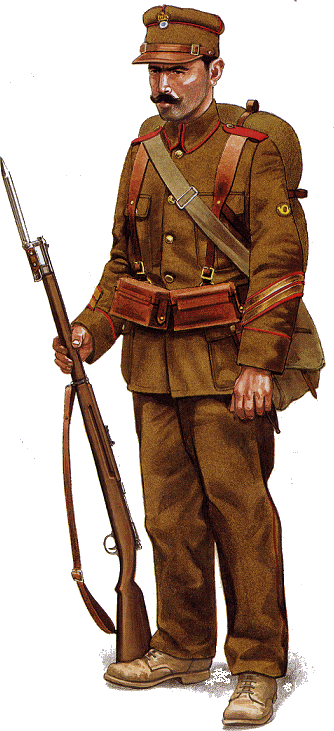
 country's economy was ruined.
country's economy was ruined. occupying powers, fought against the collaborationist Security Battalions and set up large espionage networks, but by late 1943 began to fight amongst themselves. When liberation came in October 1944, Greece was in a state of extreme political
occupying powers, fought against the collaborationist Security Battalions and set up large espionage networks, but by late 1943 began to fight amongst themselves. When liberation came in October 1944, Greece was in a state of extreme political  polarization, which soon led to the outbreak of civil war. The subsequent civil war gave the opportunity to many prominent Nazi collaborators not only to escape
polarization, which soon led to the outbreak of civil war. The subsequent civil war gave the opportunity to many prominent Nazi collaborators not only to escape  punishment (because of their anti-communism), but to eventually become the ruling class of postwar Greece, after the communist defeat
punishment (because of their anti-communism), but to eventually become the ruling class of postwar Greece, after the communist defeat

 The operations and posts of the United States military are an important part of the history of
The operations and posts of the United States military are an important part of the history of![View Smaller Image Major Ringold [ie. Ringgold] directing operations of battery, at Palo Alto, May 8, 184[6].](http://images.nypl.org/index.php?id=831379&t=w)
 Mexicans have always fascinated the British and Euro soldier producer, thje best figures were Reisler and his output put to shame the rest of the field, this was Reislers masterpiece. Britains deetail ones were well done but badly painted.
Mexicans have always fascinated the British and Euro soldier producer, thje best figures were Reisler and his output put to shame the rest of the field, this was Reislers masterpiece. Britains deetail ones were well done but badly painted. The Steve Weston ones are not really worth buying if you can get Reisler, they are far too histrionic.I would avoid them as they also lack soul and you know that when thats the case you can barely look at them. Soul in fact is what draws us to
The Steve Weston ones are not really worth buying if you can get Reisler, they are far too histrionic.I would avoid them as they also lack soul and you know that when thats the case you can barely look at them. Soul in fact is what draws us to









![View Smaller Image [Group portrait with Maclovio Herrera, cavalry leader.]](http://images.nypl.org/index.php?id=831159&t=w)








 near the recently reoccupied ranch at Calabazas.
near the recently reoccupied ranch at Calabazas.
 and the Santa Cruz River,
and the Santa Cruz River, long abandoned due to Apache raids. Renovated
long abandoned due to Apache raids. Renovated

 the new governor,
the new governor, the departmental commander in Santa
the departmental commander in Santa
![View Smaller Image [United States soldiers shaking hands, 1850s.]](http://images.nypl.org/index.php?id=831409&t=w)





 and
and
 A
A





 for which the post
for which the post fresh from West
fresh from West



 and ambushes
and ambushes The kidnapped boy, Féliz,
The kidnapped boy, Féliz,

 established the previous year in what
established the previous year in what Thinking they had defeated the Americans, the
Thinking they had defeated the Americans, the

 swelled with miners
swelled with miners just north of
just north of
 The Confederate government in Richmond, Virginia, quickly
The Confederate government in Richmond, Virginia, quickly commander of the Confederate Army of New Mexico,
commander of the Confederate Army of New Mexico,

 Hunter
Hunter A skirmish was fought on 3 March 1862 between
A skirmish was fought on 3 March 1862 between an abandoned Butterfield
an abandoned Butterfield
 This incident was the westernmost skirmish of the Civil War.
This incident was the westernmost skirmish of the Civil War.



 overall commander of the California column, soon arrived with
overall commander of the California column, soon arrived with

 where they arrested Mowry and Palatine Robinson, who was
where they arrested Mowry and Palatine Robinson, who was within the crumbling walls of the old presidio, and at the Plaza de la
within the crumbling walls of the old presidio, and at the Plaza de la

 . Rumors spread that they might try to reclaim the Gadsden
. Rumors spread that they might try to reclaim the Gadsden General John S. Mason, the new commander of the District of Arizona, was ordered
General John S. Mason, the new commander of the District of Arizona, was ordered companies of the 7th California Infantry were repositioned to build and garrison
companies of the 7th California Infantry were repositioned to build and garrison

 When another epidemic struck in the fall of that year—about the same time
When another epidemic struck in the fall of that year—about the same time




 , where they were under the nominal
, where they were under the nominal

 where there was also
where there was also

 However, tired of
However, tired of
 Chiricahuas by railroad
Chiricahuas by railroad





 in February 1913, Sonorans refused to accept
in February 1913, Sonorans refused to accept




 Following his success in Nogales, Obregón won another battle a few days
Following his success in Nogales, Obregón won another battle a few days
 . Some 160,000 guardsmen were soon
. Some 160,000 guardsmen were soon

